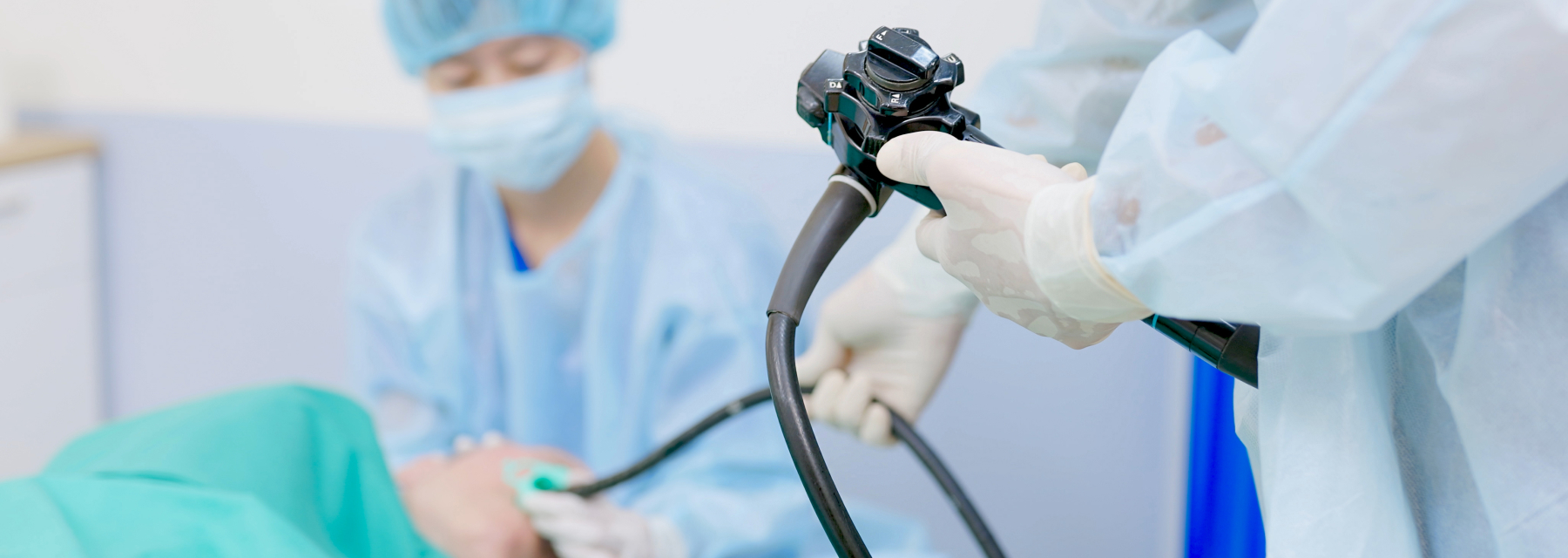EGD
An upper endoscopy is a procedure in which your gastroenterologist is able to look inside your esophagus (swallowing tube), stomach and duodenum (first part of the small bowel). Some of the common reasons for the test include difficulty swallowing, acid reflux or heartburn, upper abdominal pain, nausea, vomiting, bleeding, or low blood count (anemia).
What to Expect During the Procedure
The inside of the upper GI tract is visualized with an instrument called an endoscope. An endoscope is a thin, smooth, flexible, lighted tube that is equipped with a tiny video camera. The endoscope is passed through your mouth and advanced into the upper part of your GI tract. During this time, the video shows up on a screen so the doctor may examine the lining of the esophagus, stomach and duodenum. Other instruments can be passed through a channel in the endoscope to take biopsies, remove polyps or stop bleeding. For those patients who may have a narrowing in the esophagus, which can be causing problems swallowing, the doctor may choose to stretch that area out with special instruments called dilators. You will be administered sedation to allow you to sleep and be comfortable. During the exam you are always breathing on your own, and at no time should your airway be obstructed by the endoscope.
What to Expect After the Procedure
After the procedure is completed, you will be taken to the recovery area. In recovery, you will slowly begin to recover from the sedatives. The doctor will come to your bedside to discuss the test findings. Within 30 minutes, you should be alert enough to drink fluids and start thinking about going home. Though you may feel completely alert, you will be told that you may not drive or make any important decisions for the following 12 hours.
There are risks and side effects for every procedure. Complications are rare, but can include bleeding and puncture of the stomach lining. Some patients may have a sore throat for a couple of days as well as feel gas pressure in the abdomen from the air that is inserted during the test to inflate the stomach and small bowel. You will be given written discharge instructions explaining your recovery and the doctor's phone number you may call in case of an emergency.
Click Below For Instructions Regarding Preparing For and Completing Your EGD

